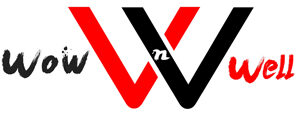In today’s fast-paced business environment, managing requests for proposals (RFPs) can be a complex and time-consuming task for companies of all sizes. RFP software has emerged as a game-changing tool that simplifies this process, offering an efficient and effective way to handle procurement needs. By automating tedious tasks, facilitating better communication, and providing valuable insights, RFP platforms can significantly enhance a company’s procurement strategy. Below, we explore these benefits in detail and demonstrate how incorporating RFP software into your business practices can transform the RFP process.
Understanding the Role of RFP Software in Modern Business Procurement
Request for Proposal (RFP) software like Qvidian simplifies the complex process of collecting and managing vendor proposals by providing a centralized, automated platform. This technology helps companies create, distribute, and evaluate RFPs efficiently, replacing time-consuming manual methods with streamlined workflows and customizable templates.
By fostering collaboration across departments, rfp software ensures that all project requirements and specifications are captured in the documents. This approach not only speeds up the procurement process but also allows businesses to focus on making smarter, strategic decisions when selecting the right vendors.
Enhancing Collaboration and Communication with RFP Tools
RFP software enhances more than just document management—it fosters real-time collaboration among team members with built-in communication tools, reducing reliance on lengthy email threads or meetings. These platforms tap into the collective expertise of cross-functional teams, making it easier to draft accurate and comprehensive RFPs.
Communication with vendors is also streamlined, with centralized queries, shared responses, and, in some cases, dedicated vendor portals. This organized exchange of information ensures clarity and uniformity across all parties. Additionally, the software offers transparency into the RFP process by showing progress, contributions, and decisions, helping prevent misunderstandings and supporting timely, goal-aligned procurement.
Maximizing Time Efficiency in the Proposal Evaluation Phase
The proposal evaluation phase in RFP processes is often time-consuming due to the complexity of comparing multiple detailed documents. RFP software streamlines this stage through scoring systems and evaluation matrices that support objective and efficient decision-making. Custom scoring criteria aligned with business goals allow teams to rank vendors accurately, while automated scoring highlights each proposal’s strengths and weaknesses.
Side-by-side comparison tools further refine assessments by emphasizing key differences. Many platforms automate the consolidation of team feedback, generating clear reports for vendor communication. These features help maintain focus on critical criteria and speed up the overall evaluation process without sacrificing accuracy.
Improving the Quality of Vendor Selection through Streamlined Analysis

RFP software enhances procurement by enabling data-driven decision-making through powerful analytical tools that simplify complex vendor information. It supports both quantitative and qualitative evaluation by structuring responses and standardizing criteria, allowing fair comparisons across diverse proposals.
These platforms also streamline risk management with features like compliance checklists and risk assessment tools, helping teams ensure vendors meet legal and regulatory standards. Historical data analysis capabilities allow procurement teams to assess past vendor performance, supporting more strategic, long-term partnerships. By integrating these functions, RFP software optimizes vendor selection and aligns procurement outcomes with organizational goals and values.
Ensuring Compliance and Consistency in Procurement with RFP Solutions
RFP software enhances compliance in procurement by providing updated templates and validation checks aligned with current legal standards. It ensures consistency across all RFPs through standardized formats and evaluation criteria, promoting fair vendor treatment and accurate comparisons. The software also generates comprehensive audit trails that log every change, communication, and decision, supporting transparency and accountability.
It protects sensitive vendor information with strong data security features, reducing the risk of breaches during the procurement process. These capabilities collectively help organizations meet regulatory requirements, manage risks, and maintain integrity throughout every stage of vendor engagement.
Altogether, the implementation of RFP software stands as a transformative move for organizations seeking to elevate their procurement processes. By bringing automation, collaboration, and insightful analysis to the forefront, such platforms not only streamline RFP management but also enhance vendor selection and ensure strict compliance standards. Leveraging RFP solutions is a strategic decision that can deliver lasting benefits and substantial improvements to procurement operations.
Also Read: The Timeless Appeal of Regular-Fit Men’s Suits: A Classic Choice




